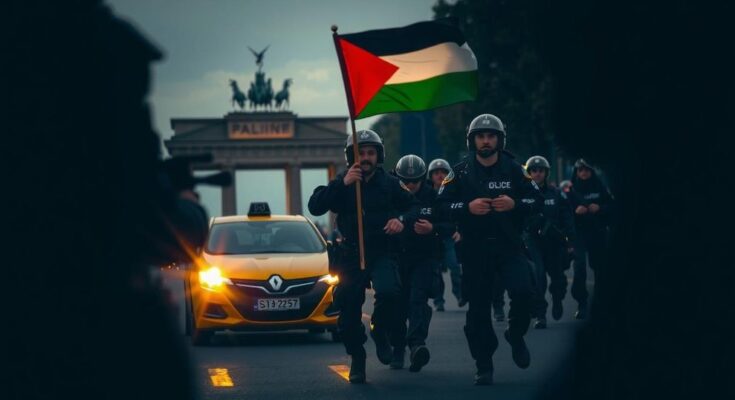In the vibrant streets of Berlin, a stirring scene unfolded recently that captivated millions online. A young boy, possibly no older than eleven, dashed through the bustling Breitscheidplatz, clutching a Palestinian flag that fluttered like a beacon amid the crowd. But the exhilarating image quickly morphed into something sinister as several police officers pursued him, their shouts echoing against the backdrop of a tense demonstration. “Police hunts a boy for waving a Palestinian flag!” screamed accusations across social media platforms, igniting a fierce debate as the footage spread like wildfire worldwide, drawing attention from major international news outlets, including Al Jazeera and Anadolu. What truly lay behind this charged chase? The Berlin police, responding to inquiries, shrouded themselves in a veil of silence while issuing a statement on social media. They explained that the young boy had appeared to be unaccompanied during a protest where illicit activities had transpired — vandalism, assaults, and the displaying of symbols associated with terrorist organizations. Thus, for his own safety, they claimed, the boy was temporarily detained. Nevertheless, they insisted he was not arrested; after 90 minutes, he was reunited with his father. Yet, behind the curtain of protective intent loomed a more disturbing reality. This same boy had become a familiar figure at Anti-Israel marches, often shepherded by adults who seemingly orchestrated his involvement in a larger, troubling narrative. Eyewitness accounts referenced moments captured on video where he was urged by a masked man to confront the jurist Karoline Preiser, who stood resolutely against the tide of hostility, holding banners of resistance. “The child and I often cross paths; he deserves a better life,” Preiser lamented, her heart heavy with the burden of watching innocence being weaponized. The story echoes hauntingly reminiscent of videos surfacing from conflict zones, where young children are exploited for propaganda purposes — a tactic that aims to juxtapose childlike innocence against the stark brutality of armed conflict, thereby painting the latter in a less favorable light. This troubling practice is not confined to distant lands; it has established roots in Germany, spurred by outrage and emotional unrest that the Berlin incident has unearthed. The police reported that during the chaotic demonstration, measures were taken against 79 individuals, leading to a staggering 85 criminal charges filed related to the display of illegal symbols, assaults on law enforcement, and other forms of civil disorder. Three police officers sustained injuries in the fray, a sobering reminder of the burden borne by those trying to uphold order amid a swelling tide of dissent. As the world watches and reacts, one question lingers: In the tumult of movements and protests, whose innocence is truly at stake? The answer unfolds amidst the whirl of emotions, drawing a delicate line between activism and exploitation, where future generations wrestle with the shadows cast by their predecessors. The tale of the Berlin boy with the Palestinian flag is just one thread in the intricate tapestry of a conflict that stretches far beyond city limits, stirring a discourse that challenges every onlooker to confront their perceptions.
Original Source: www.bild.de
